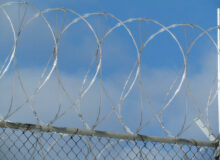Firearm Safety
[Video] Pro Shooter Jerry Miculek Shows What Can Happen If You Slide Your Fingers Too Far Forward On Your Revolver
If there was only a single person on planet earth who’s very presence was the virtual personification of ‘guns’, it would be Jerry Miculek! Jerry Miculek is an American professional speed and competition shooter. Miculek has been dubbed “The Greatest Shooter of all Time”, the man is a living marvel when it comes to firearms and when he talks guns, everyone should listen.
What Mr. Miculek is talking about in the video below, is the cylinder gap on revolvers.
Now some of you might ask- ‘What is a cylinder gap’?
Let me fill you in:
The cylinder gap is the area in front of a revolver’s cylinder, behind the barrel. Improper grip is the reason most injuries occur from the cylinder gap. These injuries can range from a third-degree burn to the loss of a finger.
When gripping a revolver, the strong hand (finger off the trigger) should be firmly wrapped around the grip, heel on the backstrap with middle, ring and pinky fingers across the front strap.
The thumb of the shooting hand should lay horizontal, under the cylinder release, along the frame. Your weak hand should be placed of the opposite side of the grip, heel of the strong hand to heel of the weak hand.
The fingers of the weak hand need to be wrapped firmly on top of the middle, ring, and pinky fingers of the strong hand. The thumb of the weak hand should firmly, while applying a slight pressure, rest on the thumb nail of the shooting hand.
The most important part of a revolver grip is ensuring that the fingers of the weak hand are wrapped around the front strap, on top of the strong-hand fingers. Injuries occur when the index or middle finger is extended along the frame and cylinder. When you do this, the fingers extend past the cylinder in front of the exposed opening. The injury occurs when the burning powder and gasses escape through the cylinder gap.
The cylinder gap is the space between the cylinder and the forcing cone of the barrel. This gap can range from 4 to 7 thousandths (0.004-0.007) of an inch. Different calibers have different pressures per square inch (PSI). The larger the pressure, the more intense the escaping gasses are from the cylinder gap. The Sporting Arms and Ammunition Manufacturers’ Institute (SAAMI) establishes the recommended maximum pressures of different calibers.
The most common self-defense calibers, for human and large animal predators, include .38 Spl. (17,000 PSI), .357 Mag. (35,000 PSI), .44 Magnum (36,000 PSI), .454 Casull (65,000 PSI), .460 S&W (65,000 PSI), and .500 S&W (65,000 PSI). As you can see, a .357 Mag, and .44 Mag. could cause a serious burn or even cut the skin of the finger. It also evident that the PSI from a .474 Casull, .460 S&W and a .500 S&W could destroy a finger.
Okay, now for those of you out there that need a ‘visual’, let’s watch as Jerry Miculek takes things a step further and shows you just what can happen to your fingers if you don’t correctly hold your revolver.
H/T – nrawomen.com
GET MORE STORIES LIKE THIS
IN YOUR INBOX!
Sign up for our daily email and get the stories everyone is talking about.







